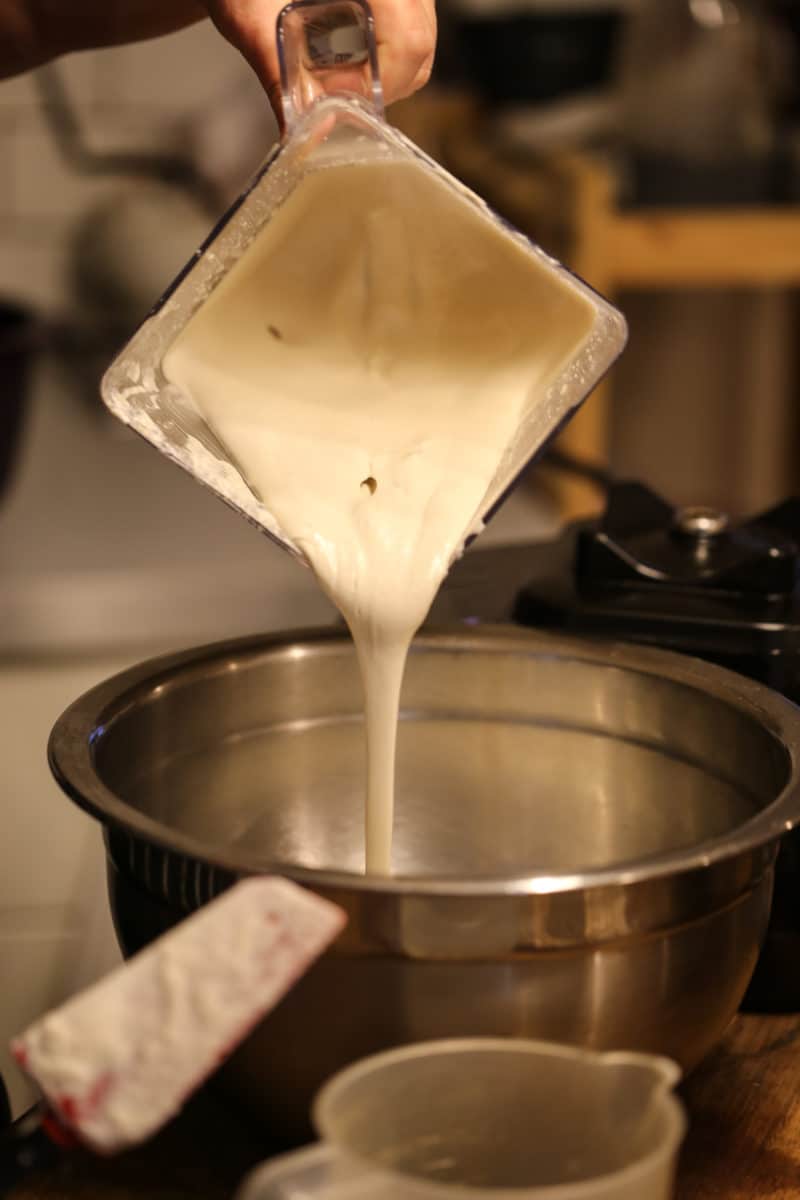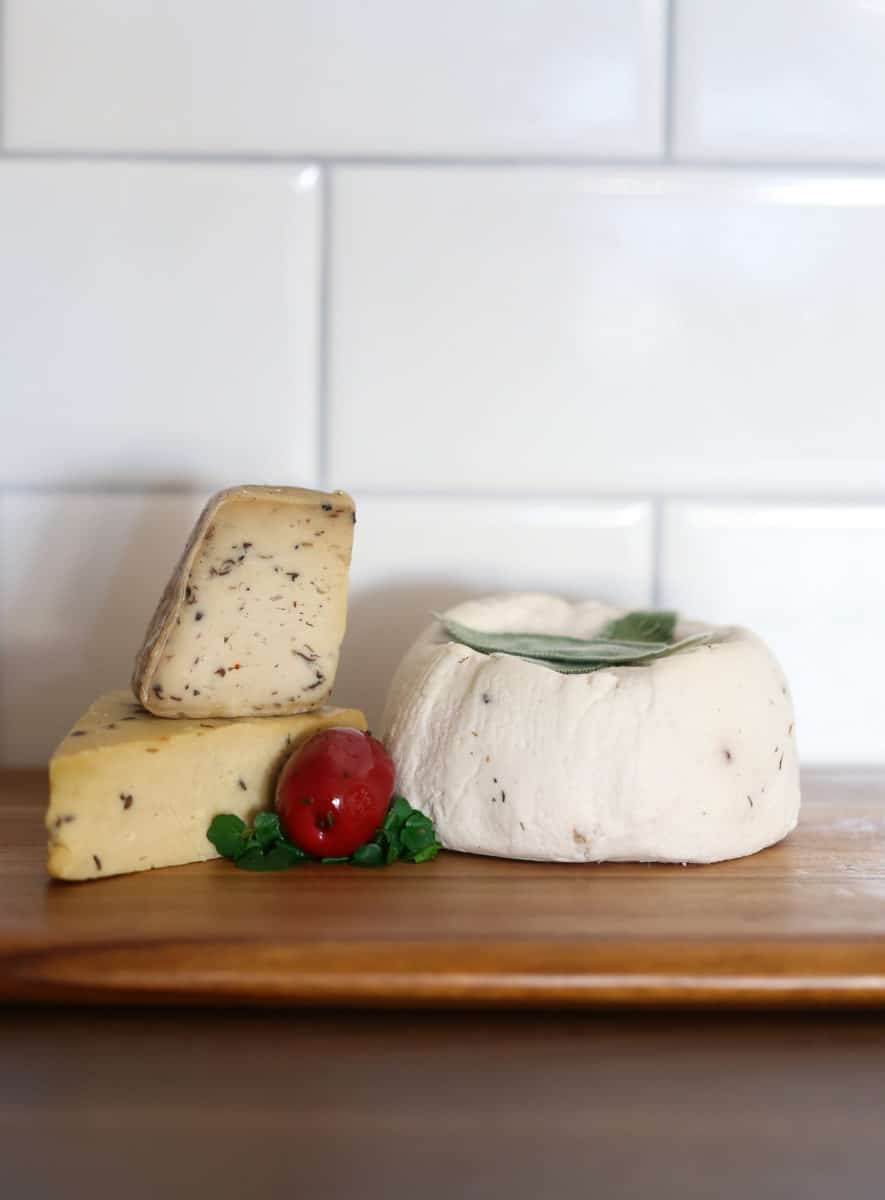Vegan cheese. These two words together are causing a bit of a ruckus, in more than one way
Vegan and cheese.
Terminologically, the linking of these two words together incite a range of reactions from bemusement to anger from skeptics and the dairy faithful.
“It can’t be cheese if there is no dairy in it!!” “Make other sounds with your mouth!” “Call it something else!” are a small range of outraged feedback that have come my way, and I am more than certain, in the direction of others working in the realm of vegan cheesemaking. However, while the outraged mock, question, doubt, and hurl vitriol, a large and increasing number of folks are open to the idea. The proof is in the numbers.
Veg News cites Bharat Book Bureau as forecasting global sales of vegan cheese equivocating to $3.906 billion by 2024. This rapid surge is both disruptive of the dairy market, and evidenced by the seemingly sudden proliferation of vegan cheese or cheese-like products on the market. Aside from the big players like Kite Hill, Miyoko’s Creamery, Field Roast Chao Slices, and Earth Island, there are a plethora of smaller (and growing) companies popping up in countries all over the world.

“It can’t be cheese if there is no dairy in it!!”
Vtopia (US), Bloedkuhla (US, artisan), Cheezehound (US, artisan), Parmela (US, cheese analogs), Violife (Greece, cheese analogs), Sheese (UK), New Roots (Switzerland, artisan), Artisa Tasmania (Aus, artisan), Nuts for Cheese (Canada, artisan), and of course, my own young company, Blue Heron (Canada). These represent just a small number of the companies currently in existence and a closer look at these companies suggests that there is also a wide range in type of product.
In a 2013 Food & Wine article, about Kite Hill (a vegan cheese company based in California with cheeses made largely from Californian almonds) founder Tal Ronnen, states that this burgeoning realm of culinary experimentation and exploration as both an example of a Californian ethos (fusing vegan, environmental and flavourful food pursuit) and a desire of science-curious chefs seeking new frontiers. Situating the California influence further, presaging Kite Hill, Miyoko Schinner, vegan chef, activist, author, launched her book, Artisan Vegan Cheese (probably the first vegan cheesemaking book, and she has her own line of vegan cheeses, Miyoko’s Creamery).
Arguably this book also launched a generation of earnest, curious and eager vegan, plant-based experimenters, seeking to create something that might meet that near magical hold that dairy cheese has held on the palette for oh so long. The birth of vegan cheese or cheese-like products is a uniquely urban pursuit, as opposed to the hundreds of years old practice of dairy cheese making, and as such is very much linked to modern day consumer trends and demands linked to ethical concerns as much as convenience and curiosity, whereas the early foundation of dairy cheese making was born from necessity and accident, a way to preserve a food stuff in the absence of modern food preservation methods such as refrigeration.
Coinciding with this rapid growth, shifting ethical concerns of consumers (personal health, environmental, and animal welfare), and culinary exploration, is the lack of a coherent, ubiquitous set of standards for understanding just what constitutes vegan cheese. With some products containing a variety of ingredients, including plant proteins, starches, gums and emulsifiers, to those using minimal ingredients and focused on microbial culturing and limited aging techniques, and yet a third range of products that are both cultured but make use of other ingredients, there are justifiable questions as to what it means to call these products cheese.
A side note, similarly in dairy cheese making, there are some cheese products which are actually considered modified milk products due to the addition of emulsifiers and other ingredients that are not normally used in traditional cheesemaking practices.
In my book, The Art of Plant-based Cheesemaking, I set out to introduce the idea of a possible, and rudimentary classification system, separating cultured (microbial usage) cheeses from cheeze (cheese analogs), those products using multiple ingredients to create familiar flavor and texture to some styles of cheese. Paying homage to some of the methods of the dairy cheesemaking craft (using microbes to create flavor and texture and various aging techniques), I set out to introduce the use of lactic-acid culturing method in developing some simple core plant-based cheeses, and compare these against a few recipes of the ‘cheeze’ variety in order to demonstrate the difference.
I choose to focus my definition as an inversion of sorts, of the definition of cheese proffered by the UN Food and Agriculture Organization’s Codex Ailementarious. Their definition states that cheese is denoted as such by the coagulation of dairy proteins by the use of digestive enzymes and microbial cultures, followed by practices used to finish this process into a final product, cheese. Similarly, I elect to focus my method on the use of microbes and plant-derived digestive enzymes to coagulate plant-based proteins (in a plant, usually nut based matrix), and use similar post culturing techniques to age my products, including dry-salting, brining, washing, pressing, etc.

It is perhaps a long shot, but nonetheless my hope that as more vegan cheese makers become interested in the craft side of the production versus the volume production of cheeze type products designed to get to market quickly, that a new evolution of cheese making itself will be understood to be evolving, and maybe, just maybe, it will be understood as an exciting new development in the culinary world. ![]()
